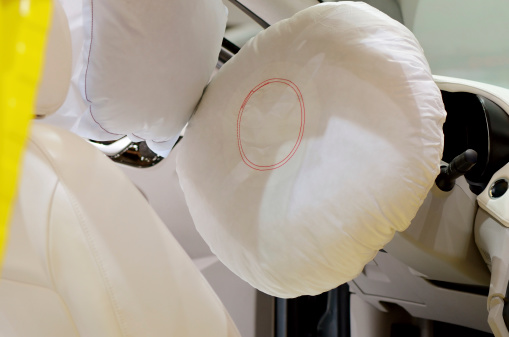November 1, 2024
How hard do airbags hit you?
Airbags are designed to rapidly inflate and then deflate in order to provide a cushioning effect during a vehicle collision, and the force of this inflation can be quite significant. However, the amount of force that an airbag hits you with will vary depending on a number of factors, including the speed of the vehicle at the time of impact, the weight of the vehicle, the angle of the collision, and the size and position of the occupant in the vehicle.
In general, airbags are designed to deploy with enough force to slow down and cushion the occupant’s forward momentum, but not with enough force to cause serious injury. The National Highway Traffic Safety Administration (NHTSA) sets standards for airbag deployment forces, and these standards are intended to ensure that airbags provide maximum protection while minimizing the risk of injury.
However, it is still possible to be injured by an airbag, particularly if the occupant is sitting too close to the airbag at the time of deployment or if the occupant is not wearing a seatbelt. Additionally, some people may be more susceptible to injury from airbags due to their age, size, or physical condition. If you are involved in a vehicle collision and your airbag deploys, it is important to seek medical attention as soon as possible to ensure that you are not injured.
How hard is the impact of an airbag?
The impact of an airbag can feel forceful due to the speed and energy involved in its deployment, but it is designed to mitigate injuries during a crash. Here’s a breakdown:
1. Speed of Deployment
Airbags deploy incredibly quickly—within 20 to 30 milliseconds after a collision is detected. They can inflate at speeds of up to 200 mph to provide a cushion before the occupant’s body can move forward significantly due to the crash forces.
2. Force of Impact
The force of the airbag impact varies based on factors such as the speed of deployment and the proximity of the occupant to the airbag. While it feels intense, the force is far less harmful than hitting a hard surface like the steering wheel or dashboard. The energy is spread over a larger area, reducing localized injuries.
3. Potential for Injury
While airbags save lives, the force of deployment can cause minor injuries, such as:
- Abrasions and Burns: Caused by the fabric of the airbag or the heat of deployment gases.
- Bruising or Fractures: Typically on the face, arms, or chest if the occupant is very close to the airbag.
- Hearing Damage: The deployment creates a loud noise, potentially causing temporary hearing issues.
- Respiratory Irritation: The chemicals used in deployment may irritate the eyes and lungs.
4. Importance of Proper Positioning
The impact of an airbag is more severe if a person is sitting too close to it (less than 10 inches from the steering wheel or dashboard) or is improperly seated. Maintaining a safe distance and wearing a seat belt properly ensures the airbag’s force is distributed safely.
In summary, while an airbag’s impact can feel quite hard, it is carefully engineered to be much safer than the alternative of hitting rigid surfaces in the car during a crash. Proper seating, seat belt use, and child seat placement are essential to minimizing the risks associated with airbag deployment.
What does it feel like getting hit by an airbag?
If you are in a car accident and the airbag deploys, it can be a surprising and jarring experience. The force of the airbag can cause a sudden jolt, and you may feel a sharp impact on your face, chest, or arms.
The sensation of being hit by an airbag can be described as a sudden and forceful pressure against your body. The force of the airbag is designed to slow down your forward motion and reduce the risk of serious injury, but it can still be a jarring experience.
After the airbag deploys, you may also experience some discomfort or soreness in the areas where the airbag made contact with your body. This is normal and typically goes away within a few days.
It is important to note that while the deployment of an airbag can be uncomfortable, it is a necessary safety feature that can help protect you from serious injury or death in a car accident.
Do airbags hurt ride quality?
Airbags themselves do not directly affect ride quality, as they are passive safety features designed to deploy only in the event of a collision. Ride quality refers to how comfortably a vehicle handles bumps, vibrations, and road imperfections during regular driving. Airbags are not active during normal operation and do not interact with the suspension system or other components that influence ride quality.
However, there are a couple of indirect considerations:
1. Weight of the Airbag System
Airbag systems add some weight to a vehicle, but the impact on ride quality is negligible for most modern cars, as manufacturers account for this in the vehicle’s design and suspension tuning.
2. Air Suspension Systems (Not Airbags)
Sometimes, people confuse airbags with air suspension systems, which use air springs to adjust ride height and comfort. While air suspension can significantly impact ride quality, it’s unrelated to the airbags used for safety.
In conclusion, airbags do not hurt ride quality and are only activated in crash scenarios, where their primary purpose is to enhance occupant safety.



